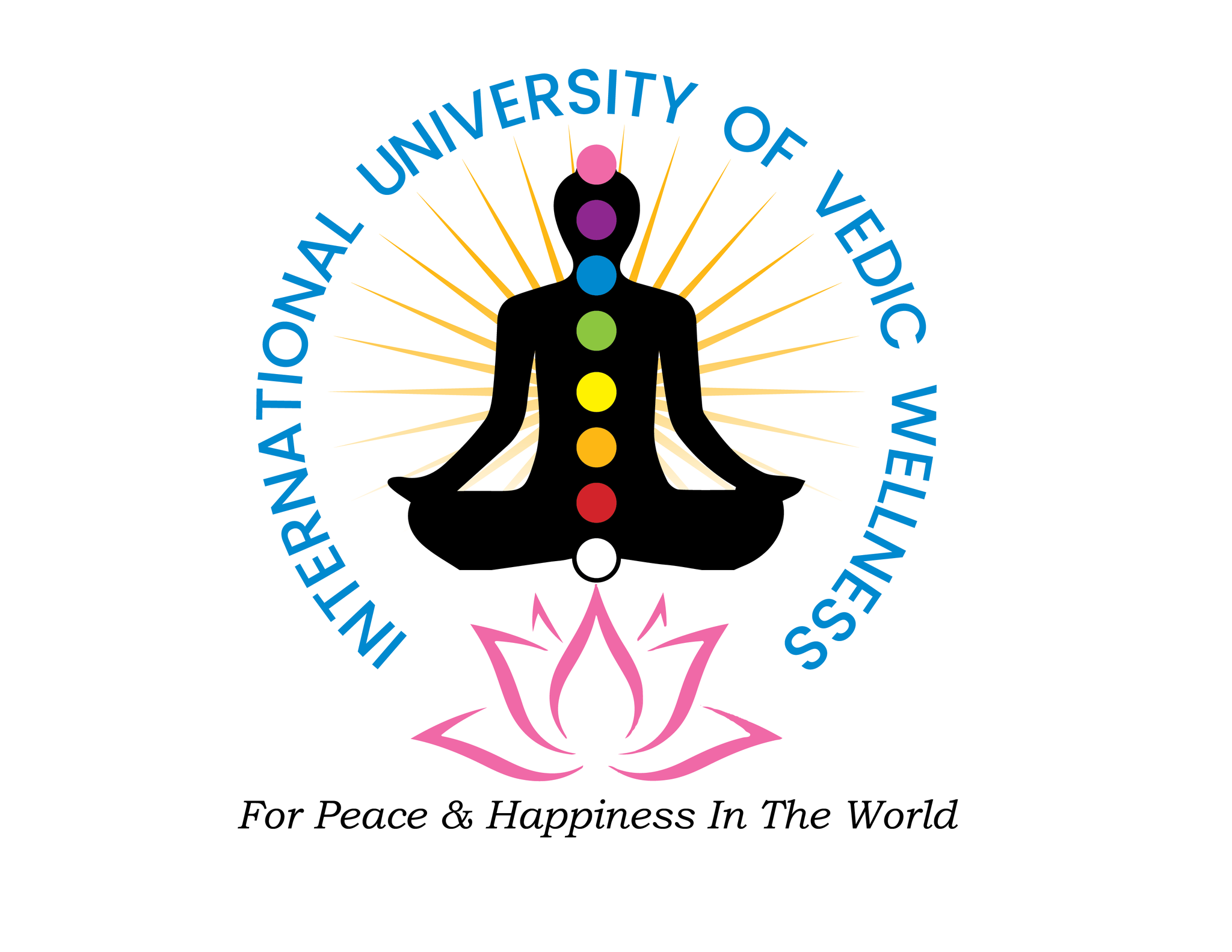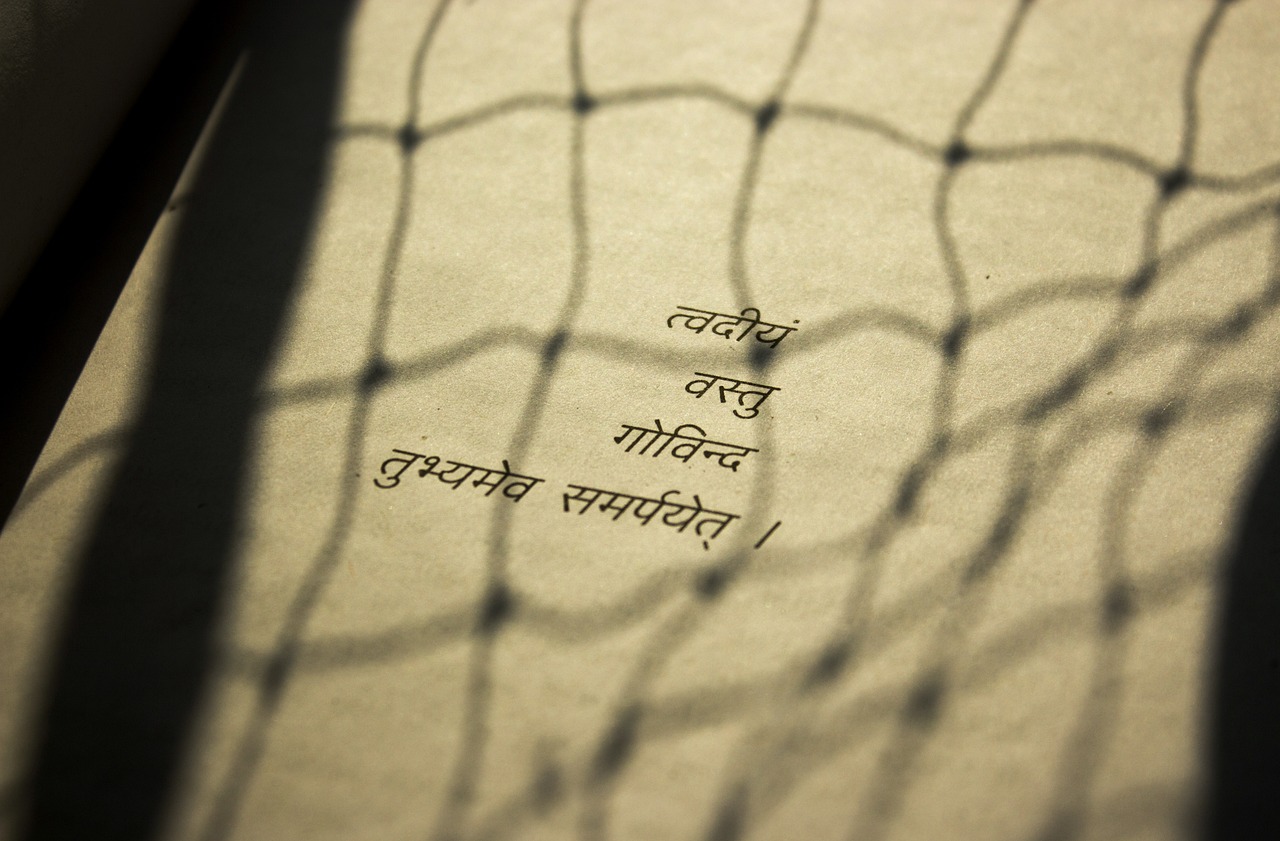The Origins and Evolution of Sanskrit: A Journey Through Time
Sanskrit, often referred to as the “language of the gods,” boasts a history that spans over 3,500 years. This ancient language has its roots deeply embedded in the Indian subcontinent, evolving from Proto-Indo-European languages around 1500 BCE. The word “Sanskrit” itself means “refined” or “perfected,” reflecting the meticulous attention given to its grammar and structure.
The language’s development can be traced through various stages, each contributing to its rich tapestry:
a) Vedic Sanskrit (1500 BCE – 500 BCE): This earliest form of Sanskrit was used in the composition of the Vedas, ancient Indian sacred texts. It was characterized by a more flexible grammar and a larger vocabulary compared to later forms.
b) Classical Sanskrit (500 BCE onwards): Codified by the grammarian Panini in his work “Ashtadhyayi,” this standardized form of Sanskrit became the lingua franca of ancient and medieval India. It was used extensively in literature, philosophy, and scientific works.
c) Buddhist Hybrid Sanskrit (3rd century BCE – 1st century CE): A variant used in some Buddhist texts, blending elements of Classical Sanskrit with vernacular languages.
d) Modern Sanskrit (18th century onwards): Efforts to revive and modernize Sanskrit for contemporary use, including the creation of new words for modern concepts.
The evolution of Sanskrit is intrinsically linked to the development of Indian culture, philosophy, and sciences. Its influence extends far beyond the borders of India, with Sanskrit words finding their way into many world languages. For instance:
| English Word | Sanskrit Origin |
|---|---|
| Guru | गुरु (teacher) |
| Karma | कर्म (action) |
| Yoga | योग (union) |
| Avatar | अवतार (descent) |
| Mantra | मन्त्र (sacred utterance) |
Sanskrit’s journey through time is a testament to its resilience and the deep reverence it commands. Its systematic grammar, phonetic alphabet, and rich vocabulary have made it an ideal vehicle for preserving and transmitting knowledge across generations, particularly in fields like Ayurveda.
The Intricate Relationship Between Sanskrit and Ayurveda: A Symbiotic Bond
The connection between Sanskrit and Ayurveda is not merely linguistic; it’s a profound symbiosis that has shaped the very essence of this ancient healing system. Ayurveda, which translates to “science of life” (Ayur = life, Veda = science or knowledge), found in Sanskrit the perfect medium to articulate its complex principles and practices.
Sanskrit’s precision and depth allowed Ayurvedic scholars to convey nuanced concepts with remarkable accuracy. The language’s ability to create compound words (samasa) and its vast vocabulary enabled the expression of subtle distinctions in Ayurvedic philosophy and practice. For example:
- Doshas (दोष): The three fundamental energies in the body (Vata, Pitta, Kapha)
- Prakriti (प्रकृति): One’s natural constitution
- Vikriti (विकृति): Current state of imbalance
- Agni (अग्नि): Digestive fire
- Ojas (ओजस्): Vital essence of the body
These Sanskrit terms encapsulate entire concepts that would require lengthy explanations in other languages. This linguistic efficiency has been crucial in preserving Ayurvedic knowledge over millennia.
Moreover, the phonetic nature of Sanskrit, where each sound has a specific effect on the human body and mind, aligns perfectly with Ayurvedic principles of healing. The recitation of Sanskrit mantras and shlokas (verses) is believed to have therapeutic effects, harmonizing the body’s energies.
The symbiotic relationship between Sanskrit and Ayurveda is further evident in the structure of Ayurvedic texts. Classical works like the Charaka Samhita and Sushruta Samhita are composed in metered Sanskrit verses, making them easier to memorize and transmit orally. This oral tradition, facilitated by Sanskrit’s rhythmic nature, ensured the preservation of Ayurvedic knowledge even in times when written texts were scarce.
Table 1: Key Ayurvedic Texts and Their Sanskrit Origins
| Text Name | Author | Approximate Date | Focus |
|---|---|---|---|
| Charaka Samhita | Charaka | 300 BCE – 200 CE | Internal Medicine |
| Sushruta Samhita | Sushruta | 600 BCE – 600 CE | Surgery |
| Ashtanga Hridaya | Vagbhata | 7th century CE | Synthesis of earlier texts |
| Madhava Nidana | Madhavakara | 7th-8th century CE | Diagnosis |
The intricate bond between Sanskrit and Ayurveda has not only preserved ancient wisdom but continues to inspire modern research and practice in holistic healthcare.
Decoding Ayurvedic Wisdom: The Role of Sanskrit in Understanding Ancient Texts
The vast repository of Ayurvedic knowledge is primarily stored in Sanskrit texts, making the language an indispensable tool for anyone seeking to truly understand and practice this ancient healing system. Sanskrit’s unique features play a crucial role in decoding the deep wisdom embedded in these texts:
- Precision in Terminology: Sanskrit allows for the creation of highly specific terms through the combination of root words. This precision is vital in Ayurvedic texts, where slight variations in meaning can have significant implications for diagnosis and treatment. For example:
-
- Vatanulomana (वातानुलोमन): Directing Vata downward
- Pittashamana (पित्तशमन): Pacifying Pitta
- Kaphahara (कफहर): Removing excess Kapha
- Layers of Meaning: Many Sanskrit words have multiple meanings, allowing Ayurvedic texts to convey different levels of understanding based on the reader’s depth of knowledge. This layered approach ensures that texts remain relevant for practitioners at various stages of their learning journey.
- Decoding Ayurvedic Wisdom: The Role of Sanskrit in Understanding Ancient Texts (continued)
- Sutras and Commentaries: Ayurvedic texts often use sutras (concise statements) followed by detailed commentaries. This structure, made possible by Sanskrit’s flexibility, allows for both brevity and in-depth explanation. For instance, the famous sutra “Rogastu dosavaishamyam” (रोगस्तु दोषवैषम्यम्) succinctly states that disease is an imbalance of doshas, while commentaries explore this concept in great detail.
- Poetic Meters: Many Ayurvedic texts are composed in specific Sanskrit meters, which not only aid memorization but also convey additional meaning through rhythm and structure. The Charaka Samhita, for example, uses meters like Anushtubh and Trishtubh to enhance the memorability and impact of its teachings.
- Etymological Insights: Sanskrit’s rich etymology provides deep insights into Ayurvedic concepts. For example, the word “Ayurveda” itself:
- Ayuh (आयुः) = Life
- Veda (वेद) = Knowledge or Science
Understanding these roots helps grasp the holistic nature of Ayurveda as a “science of life” rather than just a system of medicine.
To illustrate the importance of Sanskrit in decoding Ayurvedic wisdom, let’s examine a verse from the Charaka Samhita:
“स्वस्थस्य स्वास्थ्यरक्षणं आतुरस्य विकारप्रशमनं च” (Svasthasyasvāsthyarakṣaṇaṁ āturasya vikārapraśamanaṁ ca)
This verse encapsulates the dual goals of Ayurveda:
- Svasthasya (स्वस्थस्य) – of the healthy
- Svasthya-rakshanam (स्वास्थ्य-रक्षणं) – protection of health
- Aturasya (आतुरस्य) – of the diseased
- Vikara-prashamanam (विकार-प्रशमनं) – alleviation of disorders
Without a nuanced understanding of Sanskrit, the profound implications of this verse in defining the scope and purpose of Ayurveda might be lost. It’s this depth of meaning, preserved through Sanskrit, that continues to guide Ayurvedic practitioners in their approach to health and healing.
Sanskrit’s Influence on Ayurvedic Diagnosis and Treatment
The influence of Sanskrit on Ayurvedic practice extends far beyond theoretical knowledge, playing a crucial role in diagnosis (nidana) and treatment (chikitsa). The language’s precision and descriptive power enable practitioners to accurately identify and address health issues.
Diagnosis in Ayurveda:
Sanskrit terminology is integral to the Ayurvedic diagnostic process, known as Roga Pareeksha. This process involves various methods, each with its own set of Sanskrit terms:
- Darshana (दर्शन) – Observation
- Sparshana (स्पर्शन) – Touch
- Prashna (प्रश्न) – Questioning
These methods are further refined using Sanskrit concepts:
- Nadi Pareeksha (नाडी परीक्षा): Pulse diagnosis
- Jihva Pareeksha (जिह्वा परीक्षा): Tongue examination
- Shabda Pareeksha (शब्द परीक्षा): Voice and speech analysis
The use of Sanskrit allows for nuanced descriptions of symptoms and conditions. For example, different types of fever (jwara) are described with specific Sanskrit terms:
| Sanskrit Term | Type of Fever |
|---|---|
| Santata Jwara | Continuous fever |
| Satata Jwara | Remittent fever |
| Anyedyushka Jwara | Intermittent fever |
| Tritiyaka Jwara | Tertian fever |
| Chaturthaka Jwara | Quartan fever |
Treatment in Ayurveda:
Sanskrit’s role in Ayurvedic treatment is equally significant. The language provides a framework for classifying remedies and describing treatment modalities:
Shodhana (शोधन): Purification therapies
- Vamana (वमन): Therapeutic emesis
- Virechana (विरेचन): Purgation
- Basti (बस्ति): Enema
- Nasya (नस्य): Nasal administration
- Raktamokshana (रक्तमोक्षण): Bloodletting
- Shamana (शमन): Palliative therapies
- Dipana (दीपन): Enhancing digestion
- Pachana (पाचन): Promoting metabolism
- Kshut (क्षुत्): Inducing hunger
- Trut (तृट्): Inducing thirst
- Vyayama (व्यायाम): Exercise
- Rasayana (रसायन): Rejuvenation therapies
- Vajikarana (वाजीकरण): Aphrodisiac therapies
The Sanskrit names of medicinal plants and formulations also provide insights into their properties and uses. For instance:
- Ashwagandha (अश्वगन्धा): Literally “smell of horse,” indicating its strength-giving properties
- Shankhapushpi (शङ्खपुष्पी): Named after its conch-shaped flowers, used for mental health
- Triphala (त्रिफला): A combination of three (tri) fruits (phala), renowned for its balanced effects
Understanding these Sanskrit terms and their etymologies gives practitioners a deeper insight into the nature and application of Ayurvedic treatments.
The Relevance of Sanskrit in Modern Ayurvedic Practice and Research
Despite being an ancient language, Sanskrit continues to play a vital role in contemporary Ayurvedic practice and research. Its importance is manifold, bridging the gap between ancient wisdom and modern scientific inquiry.
- Standardization of Terminology:
In an era of global exchange of medical knowledge, Sanskrit provides a standardized terminology for Ayurvedic concepts. This is crucial for:
- Consistent communication among practitioners worldwide
- Accurate translation of Ayurvedic principles into other languages
- Maintaining the integrity of Ayurvedic concepts in cross-cultural contexts
For instance, terms like “dosha,” “prakriti,” and “agni” are now widely recognized in international Ayurvedic discourse, preserving their original meanings without the need for potentially misleading translations.
- Facilitating Research:
Sanskrit’s precision is invaluable in modern Ayurvedic research:
- It allows researchers to accurately identify and study specific Ayurvedic concepts and remedies.
- Sanskrit terms provide clear parameters for scientific studies, ensuring that research is grounded in authentic Ayurvedic principles.
- The language helps in creating standardized protocols for Ayurvedic treatments in clinical trials.
Table 2: Examples of Sanskrit Terms in Modern Ayurvedic Research
| Sanskrit Term | Research Area |
|---|---|
| Medhya Rasayana | Cognitive enhancement studies |
| Panchakarma | Detoxification and rejuvenation research |
| Dravyaguna Vijnana | Pharmacological studies of Ayurvedic herbs |
| Swasthavritta | Preventive medicine and lifestyle research |
- Integration with Modern Medicine:
As interest in integrative medicine grows, Sanskrit serves as a bridge between Ayurveda and modern medical systems:
- It helps in creating accurate correlations between Ayurvedic concepts and modern medical terminology.
- Sanskrit terms are increasingly appearing in international medical literature, facilitating cross-system dialogue.
- Understanding Sanskrit aids in the proper interpretation of Ayurvedic principles in the context of modern healthcare.
- Preservation of Traditional Knowledge:
- In the digital age, efforts to preserve Ayurvedic knowledge often center around Sanskrit:
- Digital databases of Ayurvedic texts in Sanskrit are being created, making ancient wisdom more accessible.
- Sanskrit-based software tools are being developed to aid in Ayurvedic diagnosis and treatment planning.
- The study of Sanskrit is being promoted to ensure that future generations can directly access Ayurvedic source texts.
- Continuing Education:
For modern Ayurvedic practitioners, ongoing engagement with Sanskrit is crucial:
- Many advanced Ayurvedic training programs include Sanskrit studies to enhance practitioners’ understanding.
- Workshops and seminars often focus on the nuanced interpretations of key Sanskrit terms and texts.
- Online resources and apps are available for practitioners to improve their Sanskrit skills continuously.
- Global Recognition:
The use of Sanskrit terms has contributed to the global recognition of Ayurveda:
- UNESCO has recognized traditional Ayurvedic texts in Sanskrit as part of the world’s intangible cultural heritage.
- International Ayurvedic conferences often feature sessions on Sanskrit interpretation and its relevance to modern practice.
- Sanskrit Ayurvedic terms are increasingly being included in global health and wellness vocabularies.
The continued relevance of Sanskrit in modern Ayurvedic practice and research underscores its timeless value. As Ayurveda gains recognition worldwide, Sanskrit serves as both a link to its ancient roots and a tool for its contemporary evolution. The language’s ability to convey complex ideas with precision makes it an indispensable asset in the ongoing development and global integration of Ayurvedic medicine.
Preserving and Promoting Sanskrit for the Future of Ayurveda
As we look to the future of Ayurveda, the preservation and promotion of Sanskrit become paramount. This ancient language is not just a relic of the past but a living, breathing entity crucial for the continued growth and global acceptance of Ayurvedic wisdom. Here are key strategies and initiatives aimed at ensuring Sanskrit’s vital role in Ayurveda’s future:
- Educational Initiatives:
a) Integrating Sanskrit in Ayurvedic Curricula:
- Mandatory Sanskrit courses in Ayurvedic degree programs
- Development of specialized Sanskrit textbooks for Ayurvedic students
- Sanskrit language labs with modern learning technologies
b) Continuing Education for Practitioners:
- Regular Sanskrit workshops and seminars for practicing Ayurvedic doctors
- Online courses focusing on Sanskrit terminology in Ayurvedic texts
- Certification programs in Ayurvedic Sanskrit to encourage ongoing learning
- Technological Advancements:
a) Digital Sanskrit Tools:- AI-powered Sanskrit translation tools for Ayurvedic texts
- Mobile apps for learning Ayurvedic Sanskrit terminology
- Virtual reality experiences for immersive Sanskrit learning
b) Digital Libraries and Databases:
- Creation of comprehensive digital archives of Ayurvedic Sanskrit texts
- Development of searchable Sanskrit databases for Ayurvedic research
- Cloud-based platforms for collaborative study of Ayurvedic Sanskrit texts
- Research and Publication:
a) Encouraging Sanskrit-based Research:
- Grants and funding for studies exploring Sanskrit’s role in Ayurveda
- Promotion of research papers that incorporate original Sanskrit references
- Interdisciplinary research combining linguistics, Ayurveda, and modern medicine
b) Publishing Initiatives:
- Bilingual publications of Ayurvedic texts with Sanskrit originals
- Journals dedicated to Sanskrit studies in Ayurveda
- Translation projects to make Sanskrit Ayurvedic texts accessible in multiple languages
- Global Outreach:
a) International Collaboration:
- Exchange programs for Sanskrit and Ayurveda scholars
- Global conferences on the importance of Sanskrit in traditional medicine
- Partnerships with international universities for Sanskrit and Ayurveda studies
b) Cultural Diplomacy:
- Promotion of Sanskrit as a language of global health and wellness
- Cultural events showcasing the beauty and wisdom of Ayurvedic Sanskrit texts
- Documentary films on the history and significance of Sanskrit in Ayurveda
- Policy and Standardization:
a) Government Initiatives:
- National policies to promote Sanskrit education in Ayurvedic institutions
- Funding for Sanskrit preservation projects related to Ayurveda
- Integration of Sanskrit Ayurvedic terms in national health guidelines
b) Standardization Efforts:
- Creation of standardized Sanskrit glossaries for Ayurvedic practice
- Development of international standards for Sanskrit usage in Ayurvedic research
- Certification programs for Sanskrit proficiency in Ayurvedic contexts
- Community Engagement:
a) Public Awareness Campaigns:- Social media campaigns highlighting the importance of Sanskrit in Ayurveda
- Community workshops on basic Sanskrit for Ayurvedic health
- Public lectures by renowned scholars on Sanskrit’s role in holistic wellness
b) Grassroots Movements:
- Formation of local Sanskrit study groups focused on Ayurvedic texts
- Community-led initiatives to incorporate Sanskrit Ayurvedic concepts in daily life
- Volunteer programs for Sanskrit text preservation and digitization
- Innovation in Practice:
a) Sanskrit-based Diagnostic Tools:- Development of AI systems using Sanskrit algorithms for Ayurvedic diagnosis
- Creation of Sanskrit-based software for personalized Ayurvedic treatment plans
b) Modern Interpretations:
- Contemporary commentaries on classical Sanskrit texts for modern relevance
- Innovative teaching methods combining traditional Sanskrit learning with modern pedagogical approaches
These multifaceted approaches to preserving and promoting Sanskrit are crucial for ensuring that the profound wisdom of Ayurveda continues to thrive and evolve. By bridging the ancient with the modern, we can create a future where the timeless insights of Ayurvedic Sanskrit texts continue to inform and enhance global health practices.
The journey of Sanskrit from an ancient sacred language to a vital component of modern Ayurvedic practice is a testament to its enduring relevance and power. As we move forward, the continued study, preservation, and application of Sanskrit will not only keep the rich tradition of Ayurveda alive but also contribute to its growth and adaptation in our ever-changing world. The symbiosis between Sanskrit and Ayurveda remains a shining example of how ancient wisdom can continue to illuminate the path to health and well-being in the modern era.




